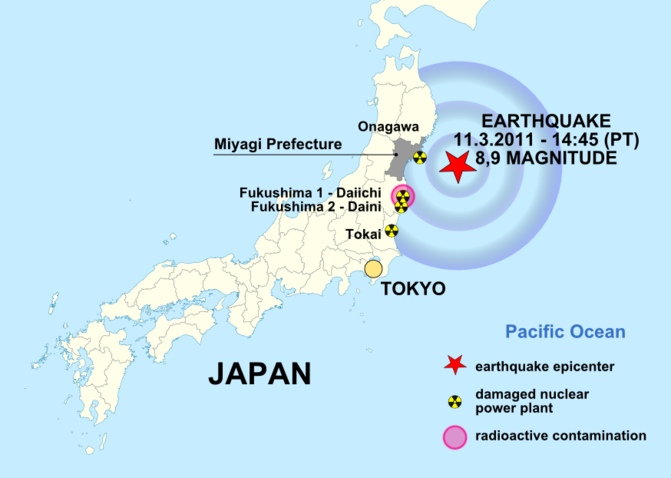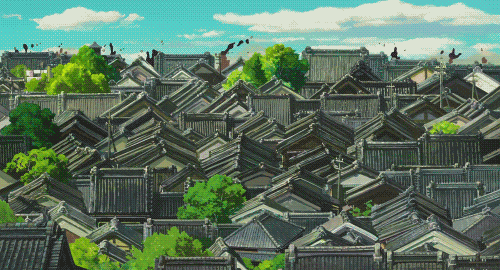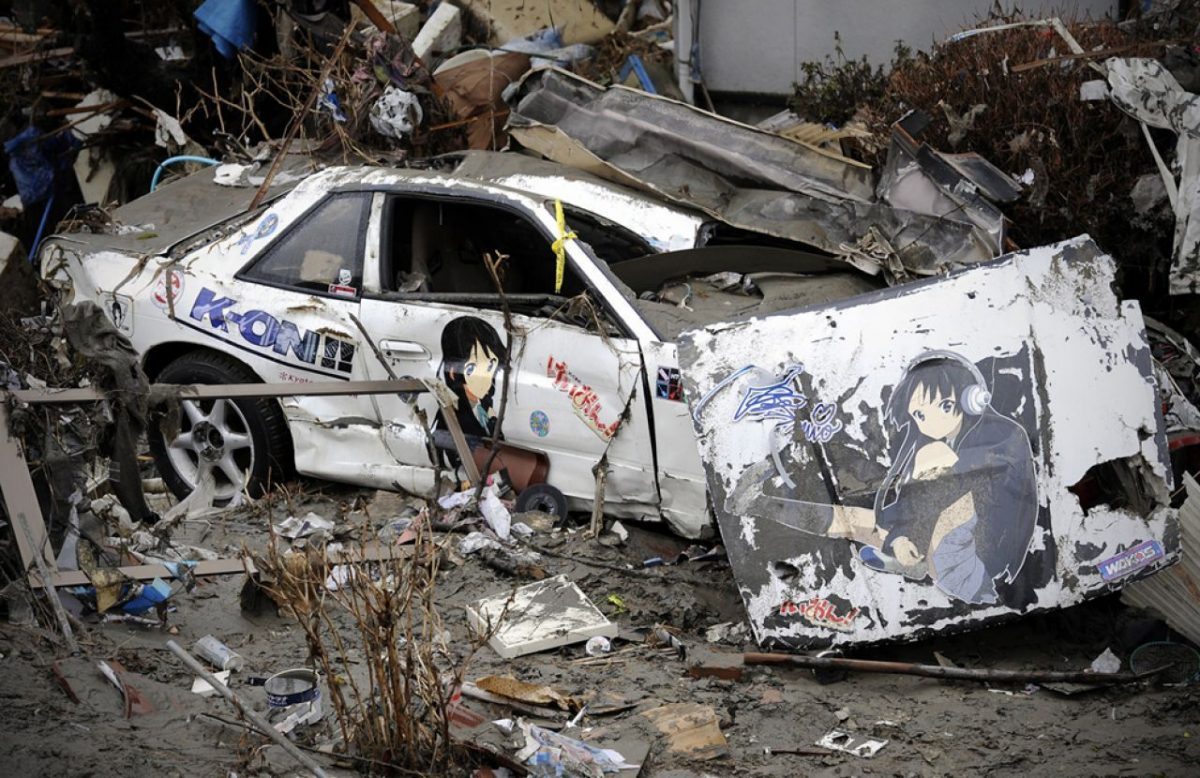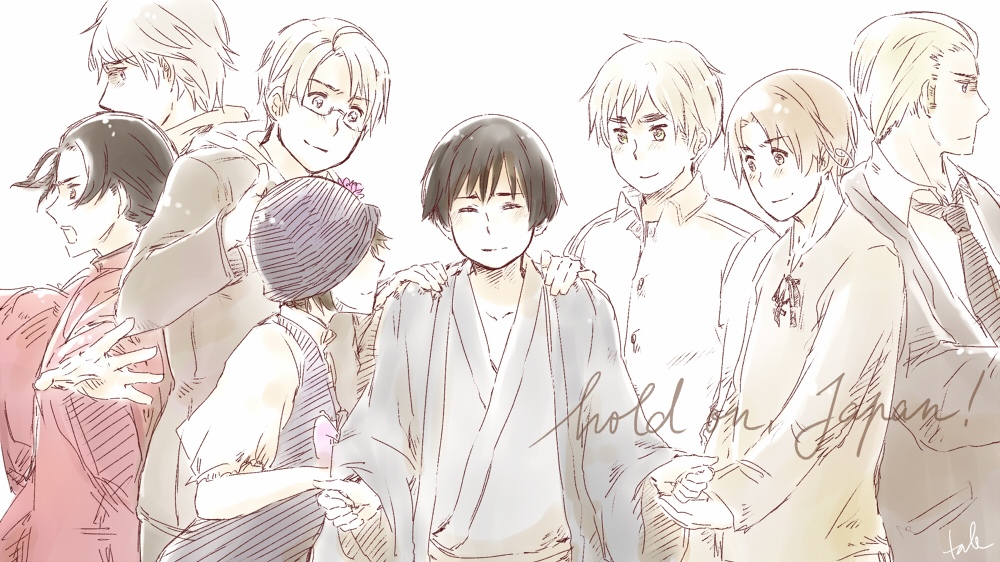There are many good things about living in Japan. The food is amazing, the people are hardworking and honest, and since inflation is low, it’s not a hard place to live economically. Best of all, there are volcanic hot spring baths around J-List I can visit any time I want. Of course, you can’t have hot springs without having a few volcanoes, and once or twice a week we’ll experience a small earthquake that’s big enough to feel, which everyone pretty much just ignores.
But one day, ten years ago tomorrow, Japan shook with terrifying energy that no one had ever experienced. Most tragically, it created a huge tsunami that caused a very high loss of life in low-lying areas in Japan’s Tohoku region, north of Tokyo, as well as a major accident at the Fukushima Daiichi nuclear plant. Let’s look back at that sad day together.

The Biggest Earthquake in Japan’s History
People from non-earthquake countries probably think it’s terrifying to live in a place like Japan or even California where quakes are part of the background of everyday life. Here it’s not a big deal: you just take note of the shaking and wait for it to pass, secure in the knowledge that buildings in Japan are the safest in the world when it comes to earthquakes. But suddenly, on Friday, March 11, 2011, at 2:46 PM — just as I was finishing up a J-List blog post, as I’m doing now — the ground started to shake with a force that no one had ever experienced before.
At a staggering 9.0 Magnitude, the megathrust earthquake was centered deep under the sea, 72 km (45 miles) off the coast of Miyagi Prefecture, where the major city of Sendai is located. Wikipedia tells me the Tohoku earthquake went on for six minutes, but to me at the time, it never really stopped, because of the constant aftershocks that continued for days.
Here in Gunma Prefecture, 300 km/186 miles to the south, the shaking was much less, although more than anything we’d ever experienced. In my office, I have a large trophy case filled with Star Wars figures, and I was desperately trying to keep the case from toppling over… as I live-tweeted updates to our followers, naturally. I remember looking out my window to see a concrete wall that was dancing up and down as the ground shook.

If the quake had been centered over land, Japan’s strict building codes would have kept the loss of life to a minimum, but because the quake occurred deep in the sea, it sent a relentless wall of water inland, pushing cars, boats, and whole buildings forward. Some communities that had prepared for the possibility of a major earthquake and tsunami and took swift action to get to the high ground came through with the minimal loss of life, but most were unprepared, believing that existing concrete seawalls would provide enough protection.
In the end, 15,899 people lost their lives in the disaster, including nineteen foreigners living in Japan, two of whom were English teachers working on the JET program. The tsunami caused deaths outside Japan, including all the way to Crescent City, California when a man had the great idea of trying to photograph the wave but got swept out to sea.
Marking the 10th anniversary of the Tohoku Earthquake and Tsunami, which caused a huge amount of damage and loss of life on March 11, 2011. pic.twitter.com/NVE0owVzxX
— Peter Payne (@JListPeter) March 10, 2021
The Tohoku earthquake was the most powerful in Japan’s history and was the fourth most powerful quake since modern records began being kept in 1900. It was so powerful, it shifted the Earth 25 cm on its axis and shortened each day by 1.8 microseconds. It was the costliest disaster in history, causing $235 billion in damages.

Dealing with the aftermath of the Tohoku Earthquake
The crisis continued for weeks, as survivors in the affected areas got used to their difficult new life in evacuation shelters as emergency housing was constructed. During the reactor meltdowns at Fukushima Daiichi, the government was forced to switch off all 39 operating nuclear reactors, which lead to power disruptions for much of the country. Everyone at J-List had to work without power every four hours, which was quite a challenge for a tech-centric company like ours. If you want to get a feel for the tense hours after the crisis began, watch Shin Godzilla.

Japan was touched by the outpouring of love and support she received from countries around the world, as donations poured in to help the country recover. The U.S. military also performed admirably, assisting Japan with materials to help the survivors get back on their feet. The world was impressed to see that even in a disaster of this magnitude, there were zero reports of looting or crimes committed by Japanese citizens, which might not have been the case in other countries.
In some ways. I was amazed at how fast things got back to normal. The disaster happened on a Friday afternoon, and next Monday morning the Japanese post office showed up to collect outgoing packages, the same as always. I was in shock that they were operating normally despite all the damage the country had suffered. In the end, J-List didn’t miss a single day of shipping products to customers.
Curious to see what Fukushima Daiichi looks like now? Read this special report from J-List!
Don’t you hate it when you get really frustrated and wish that the whole world would be destroyed, and it happens?
I hope you’ve watched #TokyoMagnitude 8.0? It’s a really outstanding anime that realistically depicts a modern disaster situation. pic.twitter.com/xMMKwUXfCC
— Peter Payne (@JListPeter) March 10, 2021
The Most Prophetic Anime Ever
Just two years before the disaster, Fuji TV produced an original anime called Tokyo Magnitude 8.0 that realistically depicted Japan during a major earthquake. In the show, we follow Mirai and her younger brother Yuki as they struggle to survive in the aftermath of an 8.0 magnitude quake, trying desperately to get home safely. It’s a show that tells a really well-structured dramatic story that you’ll enjoy every moment of, and I recommend it a lot!
Thanks for reminiscing with us about the sad events of ten years ago during the Tohoku earthquake and tsunami disaster. Happily, Japan has recovered and the communities are doing much better today.
These are stressful times we’re living through, but Japan has some interesting ways to help us manage that stress. See the new ero toys we posted to J-List, including innovative stress toys for guys, otokonoko cosplay, scented lotion, and more. Browse our newest ero products here!















